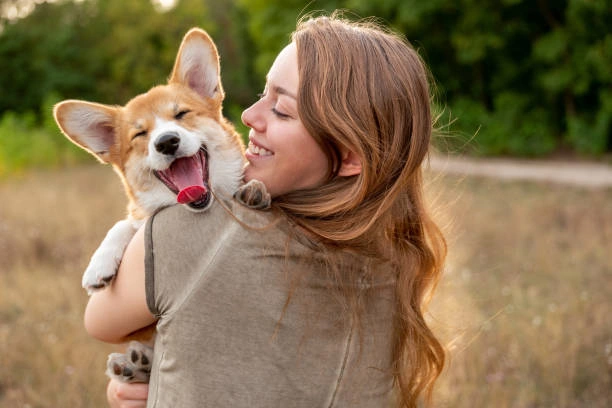This paper focuses on the story of the ‘little dog with a big heart’ in an attempt to explain the story of small dog breeds that have left their mark on history and to the people whose lives they touched. Even though they are small in size these dogs tend to be very brave, loyal and spirited dogs in every sense of the word. Over the years, most of these breeds have been associated with friendly personalities as well as being useful within different cultures and societies.
Contents
It examines how smaller breeds first appeared
In passing, small dog breeds have been in existence for several centuries with their existence being closely associated with human history. In the past people have tamed dogs for different purposes ranging from hunting to herding, guarding, and as pets. The small breeds on the same note regardless of their size, were very relevant in these tasks.
Among the first instances of the toy breed with tremendous temper is the Chihuahua, which is thought to be the Mexican dog. Apparently, it originated from the Toltec civilization that bred the Techichi, a small dog that was mute and is believed to have had a genetic link with Chihuahua. The Chihuahua was valued and prized, and has been part of art, ranking high as a status symbol and has been featured in the Toltec artifacts. These little dogs were the property of kings and usually carried out the function of the guardian spirit and therefore were buried with their masters to be able to assist them in the next world.

Yet another breed that has records reaching antiquity is the Pekingese, a dog breed coming from China. Originally, the Pekingese were bred by the Chinese imperial family and considered as sacred dogs of the Chinese emperors. It was as if they were eruptions of pure royalty for centuries, ownership of such animals was restricted to the Chinese imperial court. These tiny proud dogs were even known as “lion dogs” because they resembled the Chinese guardian lions, which were more protective figures. The Pekingese were also loyal, bold and affectionate which were some of attributes that made them the preferred pets of emperors and empresses.
The Little Warrior Spirit
Despite their size many breeds that are associated with courage have been found to have very important functions. There is one breed of dogs that displayed such qualities in a more heightened level and that is the Jack Russell Terrier. This breed of dog was created in the nineteenth century By an English parson known as Reverend John Russell and he wanted a breed of dog that would have the energy to carry out activities like fox hunts. In spite of the rather small size, Jack Russells are extremely brave and have been known to confront animals much larger than them. Thanks to their speed and courage they were valuable for hunters and farmers to deal with pests and take part in hunting.

Another example of this is the breed of the dog called the Dachshund which literally translated from the German language to English means ‘badger dog’. Originally developed in Germany to be used in hunting badgers, these long – bodied and short – legged dogs were not afraid to fight badgers underground. Dachshunds were bred to have courage and audacity and they have rather effective guarding instincts. Because of their small statues, they were fearless and loyal, which made them essential within hunting trips.
The Modern Companion
With the change in the social setup, and the need for strong working dogs came to be a thing of the past, vulnerable breeds especially the small ones had to look for other ways of surviving and so they became companions dogs, loved by many. A good number of what was known as hunting or guard dogs for the smaller houses were taken indoors to live as beloved house pets because of their friendly temperament and playfulness. These ‘little dogs with big hearts’ was a new brand of dogs that were easily adopted into the newly emergent modern homes primarily due to their fidelity, affection, and the capacity to embrace their human families.
The breed that has undergone this transition and now represents the kind of change that people want is the Yorkshire Terrier. Bred in the nineteenth century for the purpose of ratting in clothing mills, those daring dogs were later on appreciated by the nobility as lap dogs. Yorkies often don’t weigh much, however these animals have a rather aggressive temper and are very protective of their clans. This is true because they are brave, smart and full of energy, and thus they are most probably adored by many.
Another breed of a small dog which originally belongs to the ancient time and which also belongs to the royal breed is the Shih Tzu. Being one of the oldest breeds that have been around as far back as the time of Tibet, the Shih Tzu was further refined in China and primarily used as palace companions to emperors. These small dogs, with silk and soft behavior are still loved by people nowadays because of their friendly affectionate tempers and ability to adapt.

Their Love Goes Beyond The Size Of A Fist
What is common to all these breeds is their view as to them having a ‘big heart. ’ This phrase is used in a twofold manner; to express the loyalty of the breed towards their owners and to show that they have a heart and that they know it. Despite the small size, these dogs are capable of detecting owners’ emotional state and can provide comfort in sorrow and happiness in happiness. As the hunters, protectors, or lap dogs, those people found themselves in positions that changed their lives.
For instance, Cavalier King Charles Spaniels are known to be the ultimate companion dogs because they are very emotional creatures capable of developing strongly bonded relationships with people they are familiar with. Due to their sweet nature, they have been used as therapy dogs, for people who have mental disorders or people who in general have some behavioral issues. In the same way, such breeds as Miniature Schnauzers are intelligent and playful, hence bonding closely with the families they are with.
Such dogs prove that in one’s life courage, devotion, and strength is not measured by the size of the body. From the great Egyptian Empire to human homes of the present these ‘little dogs with big hearts’ have etched their place in history to be admired constantly for their history and character. They have evolved in their position but their ability to love, remain loyal and be brave has not waned at all.
Conclusion
From the time immemorial, these types of dogs showed everyone that size does not define character and the ability to work. As status symbols in ancient Egypt or vicious predators or loyal pets, those small-hearted dogs have become a part of human history. These wonderful animals’ courage, loyalty, and eagerness to lavish love, will keep these wonderful creatures’ memories alive in those fortunate enough to have had them in their homes.

